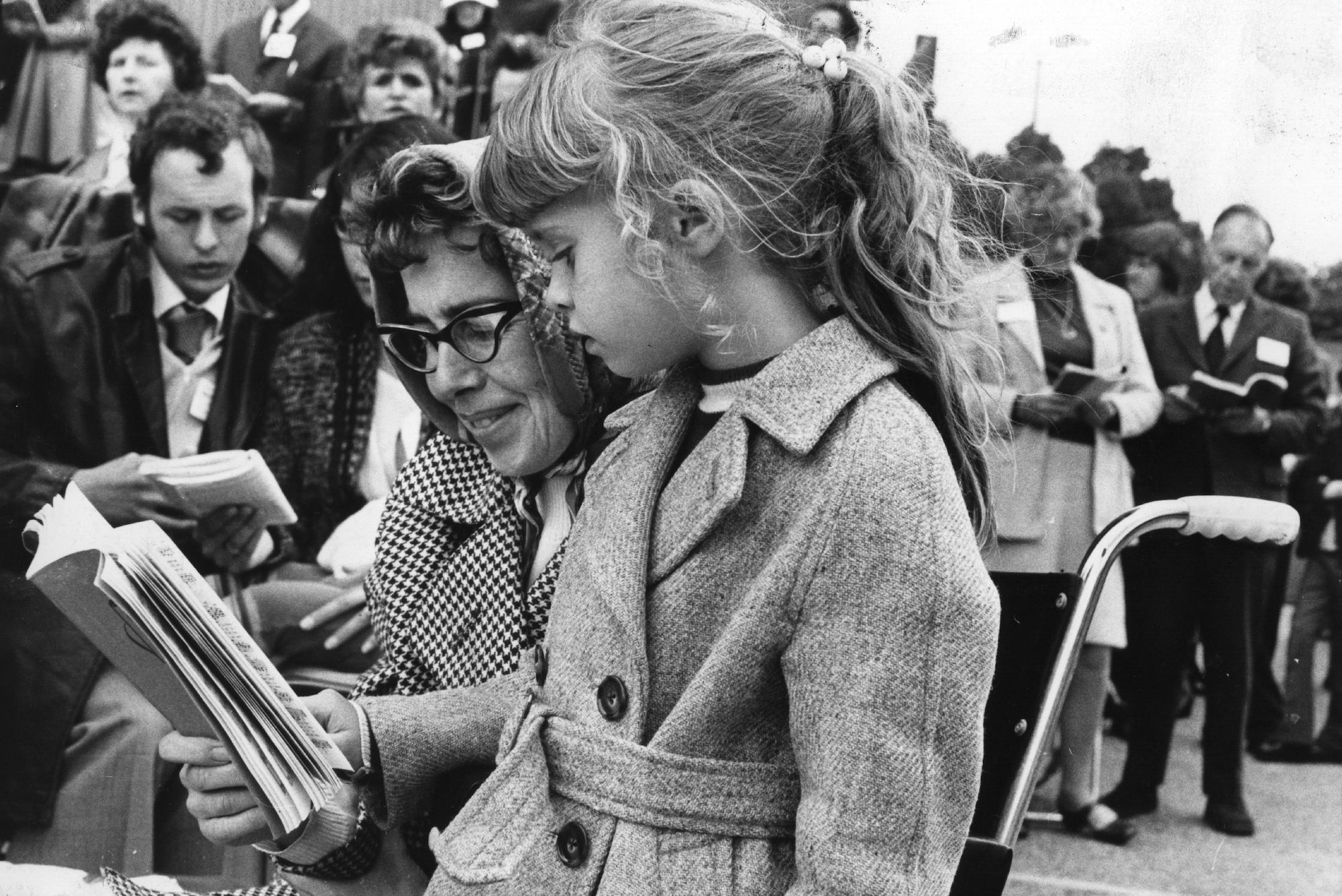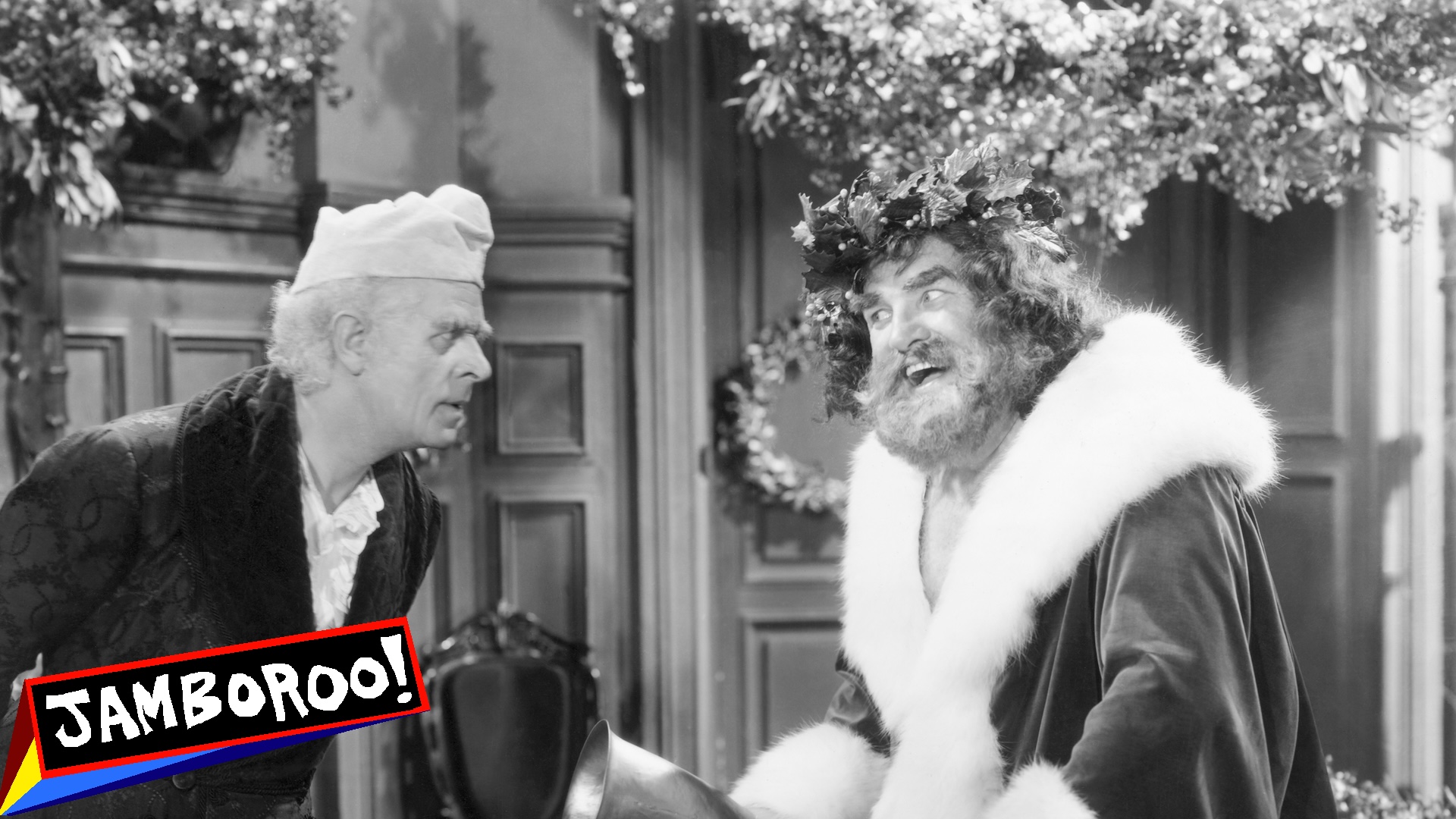This is what the Defector staff enjoyed reading in 2022.
Leave The World Behind, by Rumaan Alam
I love a cruel omniscient narrator—a mind-reading, all-seeing voice in a novel that relays its dramatic events with a matter-of-fact detachment and no regard for the biting cruelty of its honest observations. Of the stuff I read this year, Tess of the d’Urbervilles and Trust Exercise really pulled this off well, but no book I opened was better defined by the brutality of clear-eyed knowledge than Rumaan Alam’s 2020 novel Leave The World Behind.
An apocalyptic story that barely concerns itself with the actual apocalypse at hand, Alam’s book follows a well-to-do New York City couple that takes a vacation out to a rental house on a remote part of Long Island. They’re surprised at night by the owners of the home, who have escaped their own place in the city because of a blackout. As the technical difficulties pile up, and the sense that something truly awful has happened becomes impossible to ignore, Alam’s characters try to play-act normalcy even as our narrator casually, vaguely lets us in on little hints from the outside world about their impending doom. Fighter jets are dispatched, New Yorkers are trapped in their high-rise apartments, a disturbing illness spreads: We get this information in small chunks that unflinchingly underline the characters’ failure to react properly.
Some people didn’t like this book because of its lack of payoff, because of the way it teases you without giving up all the action, and because the characters themselves can be infuriatingly inert. But it does capture quite jarringly the experience of carrying on with your mundane life even as the world you’re on seems headed toward inevitable destruction. We catch glimpses of the massive problems we face every day, but we have to, on some level, disregard most if not all of these tragedies, or rationalize them in our heads, just to keep functioning. To Alam, we’re baking cakes in the aftermath of a nuclear explosion, because that’s all that we’re equipped to do.
That sounds very bleak, and it is. But the book’s most pointed, most emphatic observation about how the need for normalcy overwhelms the necessary response to man-made global disasters comes not from the narrator, but from the front cover. My copy sported a seal of approval from Jenna Bush Hager. She called it “chilling and mysterious but also poignant and even funny.” - Lauren Theisen
All This Could Be Different, by Sarah Thankam Mathews
This year, for lots of predictable and some not-so-predictable reasons, I read about the family. I read Melinda Cooper's Family Values, which lays out how poor laws and other policies cemented and enforced the family unit as the alternative to public social provisioning. I read Sophie Lewis's short book on family abolition which—somehow forceful and patient at the same time—explains the history of family abolition in left politics and makes the urgent case for why the family (Lewis explains what they mean by "family" in chapter 2) and the lottery of birth must be replaced by collectivized, capacious care. Ley lent me a copy of Woman on the Edge of Time, a utopian novel that re-envisions not only social reproduction and how we care for one another but also work (each according to their ability), gender (there is none), aging and death (tender and dignified), and love (free and non-hierarchical). I read Feminism, Interrupted by Lola Olufemi, which imagines—and then traces a path to—a version of this utopia. I read M. E. O’Brien and Eman Abdelhadi's book Everything for Everyone: An Oral History of the New York Commune, 2052-2072, which landed with me like lightning. I read work by and about scholars and activists past and present including Tiffany Lethabo King, Shulamith Firestone, Amia Srinivasan, Ellen Willis, and Richard Seymour. I inhaled most of this in a frenzy, searching for answers to questions that I'd been asking for a long time without realizing it. There's obviously still a lot that I'm missing, and so much more to unravel, but one idea that endures is simple: All of this could be different.
So when Sabrina recommended a novel to me titled, hah, All This Could Be Different, I went out and bought it immediately. Written by Sarah Thankam Mathews, it is in the most general sense a book about people in their 20s figuring out their lives. It would be doing the book a disservice to pigeonhole it as an immigrant story or a queer novel or a social critique but it's all of those things in part. Ultimately, a novel is what you bring to it and, to me, All This Could Be Different offers a raw, real-time depiction of the lurching, messy development of political and social consciousness. The novel is not a family abolitionist text or grounded in utopian thinking and yet it poked at the same questions, raised the same dissatisfactions. It's angry and determined and hopeful in that familiar way.
I read the book alongside my friend Camille and then we discussed it over Zoom. We drank our wine and talked about what each character brought to the story, the representations of race and class, the tenor of the sex scenes, and mostly, where the book comes down on the big question: Can all this be different? The novel doesn't give up an easy answer, but the final page leaves the reader with an image: "An empty box. A room full of light." - Laura Wagner
Manhunt, by Gretchen Felker-Martin
Gretchen Felker-Martin’s Manhunt opens with the brushstrokes of Hudson River School pastoral. We admire canopies of pine needles, lazy circles of turkey vultures, and the tranquil emerald-green surface of a pond that, on the second page, will be broken by a man’s zombified corpse. A corpse every few pages is roughly the pace of action in Manhunt, which follows Beth and Fran, two trans women on a hunting trip for estrogen. Their world has been ravaged by the virus t. rex, which transforms anyone with a certain level of testosterone into an infected, insatiable demon. This future has also led to the rise of fascist gangs of TERFs that seek to kill all trans women. Manhunt is a propulsive novel about survival and what is required for it: pulling out an infected tooth or sewing up a cheek, harvesting testicles for estrogen, sealing yourself into a dystopian bunker.
Despite the onslaught of gruesome woodland shootouts, militia takeovers, and torture, I found Manhunt’s most chilling moments in scenes of the mundane. While at the bunker, Beth reminisces about the “Flying Saucer Collective,” a queer co-op that banished Beth, and two other trans women, Venus and Tara, when the news first broke about t. rex. As the women stuff their belongings into bags and face the terror of being unhoused in a land rampant with zombies, Beth sees a sign posted on the co-op a year ago: THIS IS A SAFE SPACE FOR PEOPLE OF ALL GENDERS, RACES, FAITHS, AND SEXUALITIES! Venus screams at her former roommates with anger, shouting “You’re killing us!” until an air conditioner, pushed from above, cracks her skull open, killing her. Like many others in the book, this moment broke my heart and also reminded me of the ways ostensibly progressive spaces enable the false victimization that has helped TERF ideology take root in the past few years. The world of Manhunt feels both faraway and frighteningly near.
Solidarity and community does not simply congeal when a critical mass of queers find themselves in a co-op or apocalypse bunker. It takes work and honesty, often accompanied by discomfort. It requires you to look inward and examine your prejudices—transphobia, racism, ableism, etc.—and work beyond them. Being in community with people who are unlike you and being open to learning about their experiences is actually an excellent way to avoid becoming a TERF. And in that vein, Manhunt feels almost the perfect example of art that is unambiguously political and wildly entertaining. It is a book that reminds you that of the things that make life worth living (messy gay sex and enraging TERFs).
The last thing I’ll say—after a year of reading quiet novels, many of them lovely and thought-provoking, it was utterly refreshing to read a book that goes absolutely virus-infested balls-to-the-wall hard. Manhunt: no book goes harder! - Sabrina Imbler
China Mieville's Bas-Lag Trilogy
I ran into a real problem this year, which is that I allowed myself to build up some serious momentum in working my way through China Mieville's bibliography, momentum that became increasingly impossible to arrest with normal books as his unorthodox sentences and idiosyncratic fixations crowded out everything else in my brain. How could I step away to read the latest Jennifer Egan or whatever once I had read a ridiculously inventive book about the viral possibilities of and pitfalls of teaching aliens to lie, nestled within a sophisticated cosmology and presented in the classic Mievillian format of meeting notes from radical political factions? How would it have been possible to work through a Haruki Murakami novel when The City & The City's unnerving pulse of detective fiction via cosmological communism was right there for me? The only way out was through. The best books I read were Mieville's Bas-Lag trilogy.
As for those idiosyncratic fixations: Every China Mieville book is kind of about the same few things, and it rules. He is obsessed with language, for all of its flexibilities and all the organic pathways its unstoppable evolution presents. Perdido Street Station, The Scar, and Iron Council adhere to this maxim probably less than most of his other works, yet it is present, especially in The Scar, my favorite of the trilogy. A civilization of mosquito people is kept from the rest of the world so they do not inaugurate a new reign of terror over the continent. They are walled off the rest of the world by both geography and political control, though the chief agent of their isolation is lingual. Their access to books and ideas from the outside world is tightly controlled, and when some slips through, it is left as an open question whether or not the contagion will snowball into terror. The point there is that it is possible. The world-shaking drama in the rest of the book involves a generative pirate civilization going Icarus mode and trying to harness a godlike, primordial power, yet that galactic-scale plot only plays out through the interpretation of arcane languages.
It also plays out in a series of meetings between factions of an emergent political order, which is the other major trope of Mieville works. This guy loves meeting notes! His best nonfiction work, October, is a dramatization of a bunch of archival documents, mostly minutes from meetings held between various soviet councils throughout 1917. That book should be boring, yet he writes with such an earnest zeal that it moves along at a brisk pace. Iron Council, the weakest book of the three, is animated by this spirit and the titular council itself is formulated in such an imaginative way that I do not want to tell you much of anything about the plot. The three books are quite distinct, and there is scarcely any overlap of characters between the three. The final book takes place long enough after the first that the events of Perdido Street Station have calcified into half-forgotten lore, though the political contradictions that begin to unspool there get to the point that they must be resolved by the end of the trilogy. The reader learns more about the wider fantasy world of Bas-Lag (the continent) as the trilogy progresses, and the world is so richly imagined that I feel a pang of sadness that he will probably never return to it. The vein of ambiguity that runs through the three works is probably part of what makes the lore so appealing, though there's enough there that he could easily write another trilogy without over-explaining anything.
Perdido Street Station takes place entirely inside of New Crobuzon, a fantastical, harrowingly detailed simulacrum of London, which brings us to the third foundational Mieville trope: cities. Mieville's books are almost all set in cities, whose grimy underbellies, rapacious elites, and beating industrial hearts tend to be rendered with such care that they are almost always the true protagonists. New Crobuzon—which, as Mieville makes clear, smells crazy—is the apotheosis of this tendency. Mieville renders New Crobuzon with love, yet without sentimentality. He is not writing a hagiography of the city, because that would not be honest. New Crobuzon is connected by five train lines that radiate out from Perdido Street Station and is riven with contradictions and tensions, from the Glasshouse where the cactus people live out a dignified cosplay of their now-impossible desert lives, to Dog Fenn where rebellion is fomenting, to the omnipresent militia towers from which the city's ruling class spy on everyone else and distribute ruthless violence to keep them in line.
Each of the three books adheres to the tropes of a different genre—respectively, horror, Melville-ass sea adventure, and western—and they are written with slightly differences in flair so that you will not get sick of them if you chain-read them. There is a radical vein of possibility that flows through the Mieville canon, an irrepressible optimism for a future free from systemic oppression through the power of collaboration. No matter how repressive a system is, Mieville's characters tend to live on the frontiers of emergent movements, radical reimaginings of systems as they exist today. They don't always succeed, but they always dream. The systems and the movements themselves are extremely entertaining to read about, especially in this particular trilogy, because Mieville's political imagination is matched by his panache for thinking up science-fiction/weird fantasy worlds, worlds that become harder to wrest yourself from the deeper you go. - Patrick Redford
Ways Of Seeing, by John Berger
Ways of Seeing, at its most ambitious, wants you to forget everything you have been told about understanding art. There is no "right way" to interpret art, as there is also no wrong way, because all art automatically interacts with the viewer, their own biases and their own lived lives to create a new experience. Art is not static, nor frozen in time, and this is key to understanding how the wealthy have used art and their power over art to manipulate how the public perceives it—and to maintain their control over it.
Written by the lauded art critic John Berger in 1972, as a compendium to a BBC series on the same topic, the text was lauded as widely influential but remains vital today. As Berger lays out, art itself remains perpetually open to change, especially in an age of easy reproduction. Reproduction has both opened up art to the world and cannot help but change what an image means. The Mona Lisa on a T-shirt is both the same image that hangs in the Louvre and yet could not be more different than what hangs in the Louvre because so much of the Mona Lisa's meaning is tied up in that very idea that it is the type of image a person experiences at the Louvre.
All that reproduction of images leads the book to its natural conclusion, in late-20th-century advertising. Here, Berger draws a line from those oil paintings—meant to convey a sense of wealth and privilege—and how those same images appear in modern-day advertising campaigns, whose purpose is to make you buy things that will make you feel like you too have wealth and privilege. As with oil painting, it shows that tools themselves are not inherently democratic. The intent comes with how they are used.
There is more, like when Berger explains how art is used to subjugate women, noting "men act and women appear," or when he explains why the vast majority of oil paintings from 1500 to 1900 were little more than hack work celebrating capitalism done to please the marketplace. But perhaps most important is the central thesis that Berger returns to again and again: Your take is no better nor worse than that of the vaunted art historian. And, yes, that would even apply to Berger. - Diana Moskovitz
The Faces, by Tove Ditlevsen
There are two kinds of literature that I will always, always buy from the bookstore. The first is a very short novel filled with weird shit, and the second is a first-person memoir chronicle of someone's childhood. When books in these categories are good, they are some of the best writing I've ever read. And when they're bad, well, it usually doesn't take too many pages to realize that, and then you can abandon them.
The love for the second type of memoir is how I ended up reading every book in Karl Ove Knausgaard's My Struggle series a few years back, and how I ended up reading all of Annie Ernaux's oeuvre last year. It's also why I read Tove Ditlevsen's The Copenhagen Trilogy last year, which was one of my favorite books of the year.
When I learned that Ditlevsen had also managed to write a short, weird novel during her career, and that it was being re-released in English this year, I ran to the bookstore to buy it. I consumed it in a gulp, a single three-hour sitting where I carried the book with me to the kitchen to get snacks and back to the couch. It was engrossing, and beautiful, and so so strange. Because of my own experience with mental illness, I think of this book constantly, of how generous and honest Ditlevsen manages to be, of how true this book feels, even if it's fiction. - Kelsey McKinney
Rebecca, Daphne du Maurier
I first read Rebecca on a tablet. That was wrong of me. I regret the error. Rebecca is meant to be crinkled and underlined and stuffed into coat pockets and thrown across rooms. It is so distressing and engrossing that just thinking about it makes me want to lie down. Except I can’t! Because I have to finish this blurb. This read around, I picked up one of those tiny mass-market paperback copies with the text of the novel all in seven-point font and a big swoopy ‘R’ on the cover. In Rebecca, you see, the pulp is the point. Our young, shy narrator—we know her only as the second Mrs. de Winter—obsesses over her new husband’s dead first wife, Rebecca, who seems in every way the second wife's superior. “Rebecca, always Rebecca,” she grumbles. “I should never be rid of Rebecca.” Rebecca haunts the Manderley estate, and du Maurier hits all the right eerie and psychological notes. She could even write menacing flowers: “They choked the terrace, they sprawled about the paths, they leant, vulgar and lanky, against the very windows of the house.”
I also first read Rebecca as a teenager, and while I won't call that “wrong,” I will say it’s much more fun to read when you’re not bogged down in sympathy for the narrator. With world-weary distance, you can roll your eyes at her self-absorption, at all the cringe things she does. You can yell at her to “GET over yourself!!!! And get OUT of the house!!!! Ohhhhh my god!” before you throw your tiny mass-market paperback across the room. - Maitreyi Anantharaman
Dilla Time, by Dan Charnas
My complaint with most contemporary music criticism is that it doesn’t engage enough with the music itself. I don’t need vaporous descriptors of the songs or the emotions they invoke; my dumb brain can supply those on its own, thank you very much. But there’s plenty I do want to read about, from someone who’s done the homework: the nitty-gritty of technique and process, how artistic intent survives the stranglehold of market incentives, the social ecosystem from which this art emerged. If anything, Dan Charnas’s fat tome on the life and works of J Dilla engages too strenuously with the source material, advances too ambitious an argument about the influence of a beatsmith I’ve long admired but never quite knew enough about. James Dewitt Yancey, a man shrouded by myth-making since his death in 2006 at age 32, is exhumed here in exhaustive detail. There’s nothing I could possibly want to know about the guy that isn’t stashed away in one of these 480 pages. (If you already knew that N*SYNC, in their prime, was straining to get some J Dilla production, then you’re well ahead of me.) The resulting book is not just a biography of one genius but a rich account of that whole lane of heady turn-of-the-millenium hip-hop and R&B. Charnas has collected all the receipts, on everything from the design of the MPC, to the landscape of Detroit nightlife, to the Okayplayer message boards, to the bleak legal battle that ensued after Dilla's death. A musicologist helped create the clever illustrations that punctuate the book, clarifying the relevant concepts. I'll admit I sometimes found myself scratching my head at the urgency and breadth of Charnas’s claims. Sharper music theory and hip-hop heads than me will likely find something to dispute. But I’m grateful that he gave us something to wrestle with in the first place. We need more like it. - Giri Nathan
The Day Of The Owl, by Leonardo Sciascia
I don’t remember how I wound up even becoming aware of the quasi-genre that my wife describes as “your books.” They are mysteries, sort of, often in translation and generally but not always oldish, that, she went on to explain when pressed gently, “are set in no time or place in particular, and by Italian writers.” It is a difficult thing to be owned like this by someone you care about—by someone who has purchased some of these very books for you as gifts—but she is not wrong. Not all of these books are by Italian writers, and the French novelist Patrick Modiano is probably the master of this form if I was forced to name one, but the ones I like most are pretty much what my wife said.
Modiano’s books, or at least the ones I’ve read and enjoyed, are structured like exceptionally low-stakes mysteries in which a narrator tries and mostly fails to find someone who has gone missing; sometimes this disappearance owes to great events of history rolling up the past in the usual annihilating violence, and sometimes it is just a matter of time passing and people moving as people do, leaving behind almost-empty apartments, or addresses that aren’t addresses anymore, or people they once knew who lost track of them. The tidal churn of time passing, the natural way in which cities and days pump people through and out of them, present themselves not quite as crimes to be solved, but inescapably as mysteries to be investigated. Of course they don’t resolve.
So that’s one type of it. But the ones [wife’s name redacted] was referring to do tend to be set in Italy, and have a less ruminative and wistful cast to them. The one of those that I enjoyed most this year was the earliest and in some ways least cynical and abstracted novel that I’ve read by Leonardo Sciascia, a prolific Italian political novelist who has had three novels translated into English that are still in print through the New York Review Of Books Classics series. The one I read this summer is called The Day Of The Owl, and was written in 1961—a bleak and cynical time in Italian politics, but nowhere near as bleak or cynical as 1971’s Equal Danger, which is indeed set in an unnamed country, albeit one that happens to be going through the same sort of civic atrophy and random spasms of aimless political violence that afflicted Italy during its Years Of Lead. Equal Danger is a classic example of My Books, a political mystery in which the perpetrators not only get away with it entirely, but have maximum leverage throughout; the hero, an investigator seeking to find out who keeps murdering prosecutors, is heroic mostly because of how doomed his stubbornness makes him.
Day Of The Owl, on the other hand, is a decently straightforward, eye-level book about a mafia killing in Sicily in which … well, also the perpetrators get away with it, and have maximum leverage throughout, and the investigator-hero is heroic both because of his stubbornness and because of his unwillingness to accept that the current state of affairs is just how it is. Later in his life, Sciascia seemed to have accepted this; the Italy in which he spent most of his life, which was intermittently and stubbornly post-fascist but still both riven and ruled by corruptions mundane and profound, wouldn’t have given him much choice. But in Day Of The Owl, in which a mafia murder is denied and excused and finally made unsolvable in ways I won’t spoil here, the cynicism and outrage are braided together in a way that is not just well-observed and oddly endearing, but familiar in a way I found bracing, if not quite comforting. Sciascia’s and Modiano’s books, different though they are, probably became “my books” because of the balance they strike—curious, engaged, humane, understated, if also thwarted by the forces, great and small, that conspire against all that. They’re mysteries I can relate to, right down to the ways they refuse to resolve. Also they’re short. - David Roth
Patrick O'Brian's Aubrey-Maturin novels
If you asked me what the best books I read in my 20s were, I would have answered these, Patrick O’Brian’s 20-plus novels set during the Napoleonic Wars, featuring a British naval officer and an Irish-Catalan surgeon/naturalist/spy, and probably best known for the movie adaptation Master and Commander. I resisted revisiting the series for a while, because life is short and there are too many unread great books out there to spend much time rereading, but also because a part of me was afraid they wouldn’t live up to the heights my nostalgia granted them. Now nearing the end of my 30s—a little smarter, a little tireder, a little more cynical, a little better-read—would what are at heart adventure stories hit the same way? I started my reread this year, and I’m extremely happy to report they’re even better than I remembered.
They are everything I want in a book. They are pulpy page-turners that can spin a phrase as high-minded as anything “literary.” They are full of finely drawn, intriguingly ambiguous characters—Stephen Maturin, specifically, is as complex and real as anyone ever set down on paper—but also firmly held notions of right and wrong. They transport a reader to a time and a place so different from our own that it can be overwhelming, and you are thrown no life preserver but left to sink or swim amid the exotic words and rhythms of the Age of Sail until it all starts to feel a little familiar—but they are timeless in humanity. There are roaring action scenes, and there are quiet, pleasurable moments that do nothing but progress the friendship that is at the series’ heart. Above all else, they feature O’Brian as an author in full command of his world; every page exudes his mastery. The books may very well turn out to be Not Your Thing. But try one. If it is Your Thing, you’ll know instantly. - Barry Petchesky
Heat 2, by Michael Mann and Meg Gardiner
It’s one of the best movies I’ve ever seen. It just happens to be a novel. When I grow up I wanna be Michael Mann. - Drew Magary







